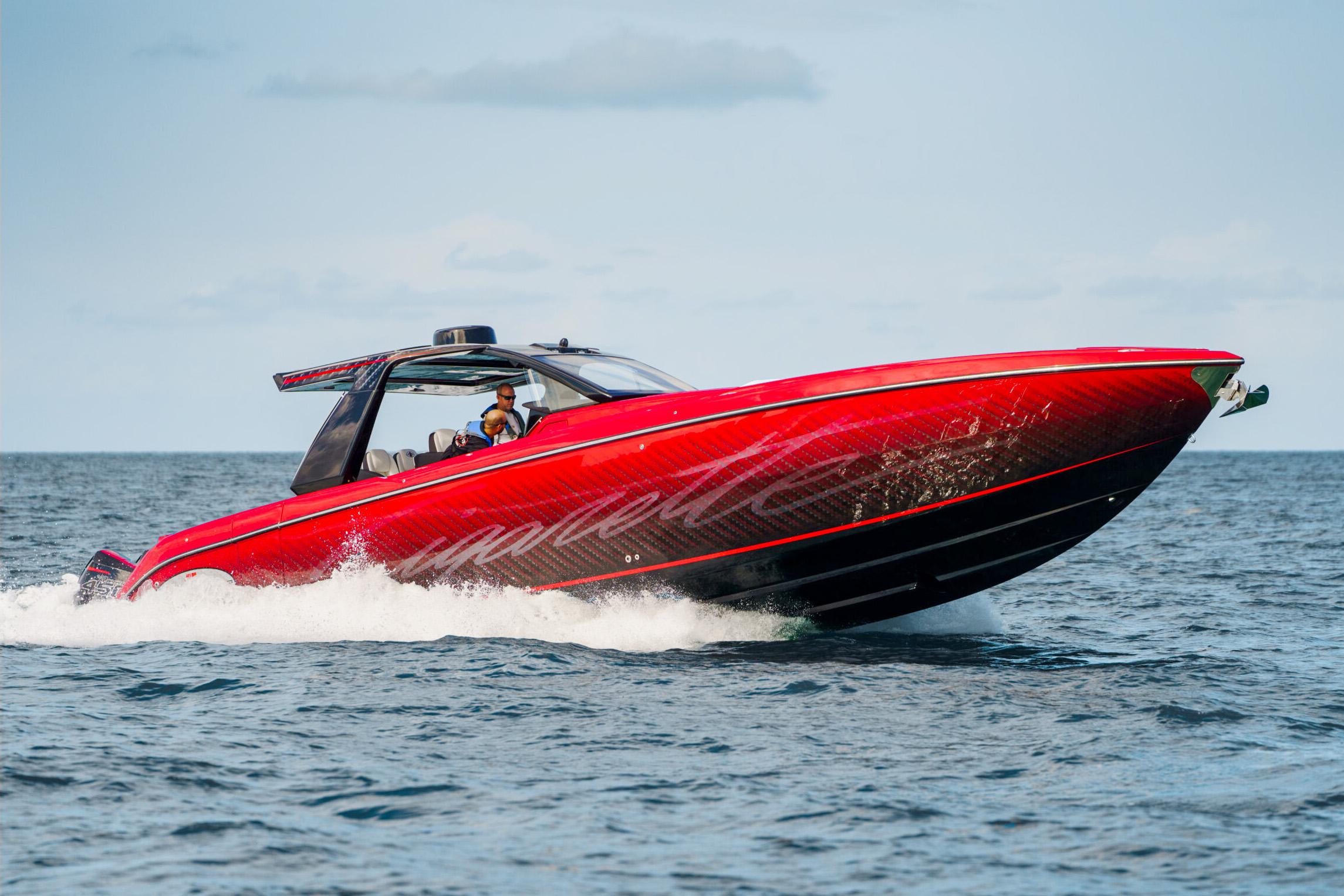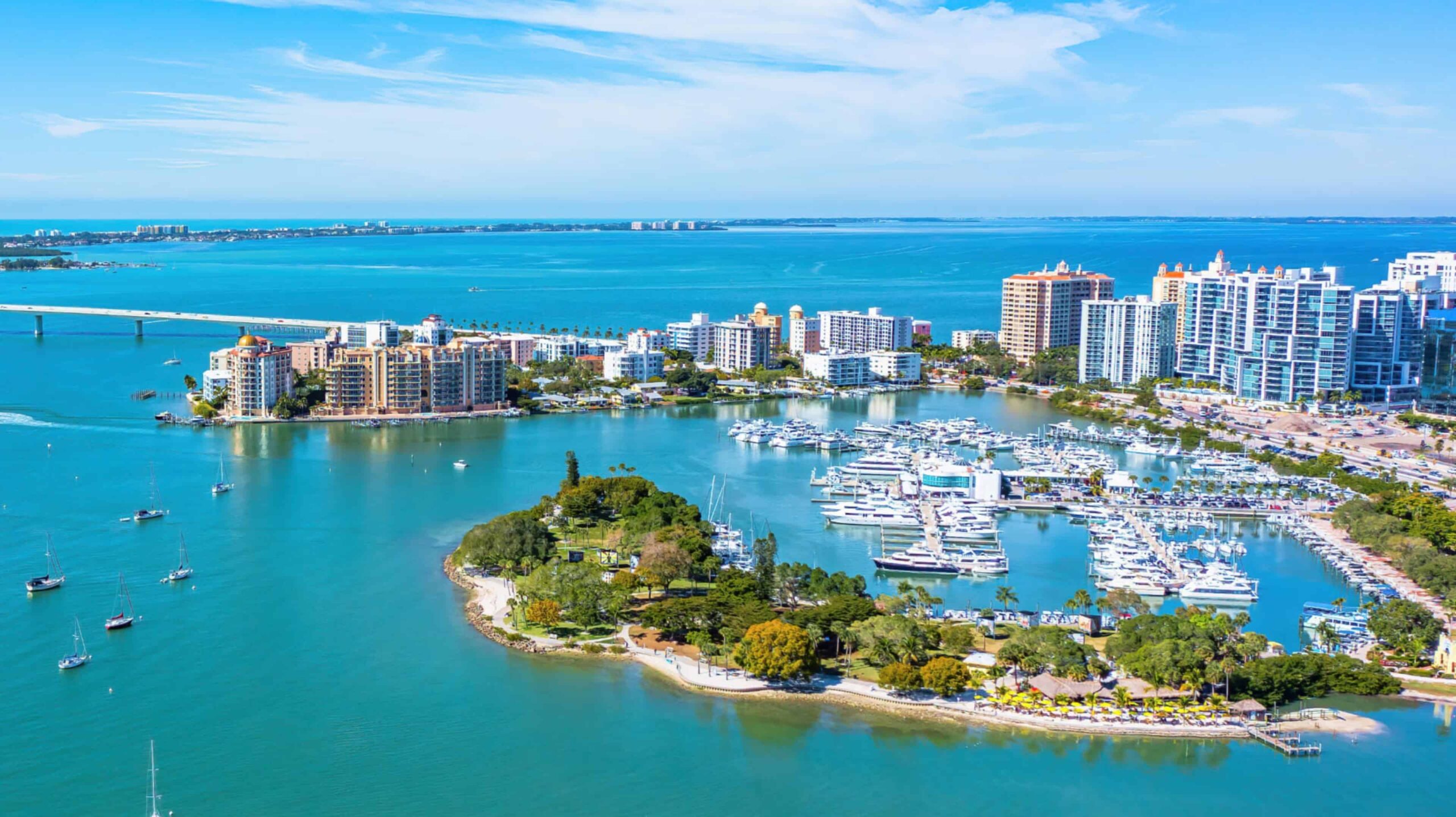Circle of Death: Boating Accidents and Prevention Strategies
Boating accidents are often unpredictable and can lead to life-threatening situations for those involved. One such dangerous phenomenon experienced by motorboats is the "circle of death."
The circle of death occurs when the boat operator releases the steering mechanism while the boat is still powered. This allows the force of the rotating propeller blades to cause the boat to move in tight, circular patterns. These uncontrolled circles put ejected boaters at risk of being struck by their own vessel, potentially causing injury or even death.
Understanding the causes and prevalence of circle of death boating accidents is vital for ensuring the safety of everyone involved.
Boating safety measures, such as proper training and emergency response procedures, play an important role in preventing these accidents and mitigating their consequences. Additionally, awareness of legal and ethical considerations surrounding boating accidents can help guide those involved in navigating the aftermath of such incidents.

Key Takeaways
- The circle of death represents a hazardous boating situation caused by the loss of steering control, leading to dangerous circular patterns.
- Awareness of safety measures and emergency response procedures can prevent and mitigate the consequences of circle of death accidents.
- Legal and ethical considerations play a role in navigating the aftermath of boating accidents, emphasizing the importance of safety practices.
Understanding the 'Circle of Death' in Boating
Definition of the Circle of Death
The "Circle of Death" is a hazardous phenomenon experienced by motorboats, resulting in serious injuries and even fatalities in some cases. This dangerous event occurs when a boat operator accidentally releases the steering mechanism while the boat is still in motion, keeping the propeller turning.
Causes and Mechanics
The primary cause of the Circle of Death is the release of the steering mechanism while the vessel is still powered.
As the boat operator lets go of the steering wheel or outboard steering handle, a force known as steering torque comes into play. This force is caused by the rotation of the propeller blades, leading to an imbalance in the boat's movement.
As a result of steering torque, the motor of the boat often slams to one side, causing the vessel to swerve sharply and unexpectedly. The sudden change in direction can throw the boat operator or passengers into the water, putting them at risk of being struck by the still-spinning propeller.
To minimize the risk of a Circle of Death accident, boat operators must maintain a firm grip on the steering mechanism at all times and be aware of any potential hazards in their surroundings.
Prevalence and Statistics
Boating Accident Rates
In recent years, there has been a noticeable increase in boating accidents in the United States.
According to the U.S. Coast Guard's 2019 Recreational Boating Statistics, the number of fatal boating accident victims reached 79%. The majority of these victims drowned, with a lack of life jacket usage being a significant contributing factor. It is essential to consider these statistics when discussing boating safety and accident prevention.
A more recent summary released by the Coast Guard in 2022 reveals a slight decrease in boating fatalities, with 636 deaths in that year compared to 658 deaths in 2021. Despite this reduction, the numbers remain relatively high, putting emphasis on the importance of boating safety awareness.
Propeller Injury and Death Rates
Propeller injuries are another significant concern within the realm of boating accidents. While not as prevalent as drowning incidents, propeller injuries can still lead to severe consequences.
According to the U.S. Coast Guard, propeller accidents were responsible for 167 injuries and 35 deaths in 2019.
To provide a clearer perspective on the issue, let's consider these statistical highlights:
- In 2019, there were 167 propeller-related injuries
- The same year witnessed 35 propeller-related fatalities
- The 2017 Recreational Boating Statistics reported that 76% of fatal boating accident victims drowned
These statistics highlight the importance of proper boating safety measures, particularly in preventing propeller injuries and deaths.
Causes of Boating Accidents
Operator Errors
One of the primary causes of boating accidents is operator errors. In many cases, poor judgment, lack of experience, or inattention can lead to dangerous situations on the water.
For example, alcohol use is a leading contributing factor in fatal boating accidents, as it can impair a boater's judgment, balance, and coordination. Proper training and adherence to established boating safety guidelines can help mitigate the risks associated with operator errors.
Equipment Failures
Equipment failures can also contribute to boating accidents.
For example, a malfunctioning steering mechanism can result in the loss of control over the boat, possibly leading to collisions with other boats or objects in the water. Similarly, issues with boat fuel system or engines may cause fires or explosions onboard.
Regular maintenance and inspection of critical systems, such as engines, steering mechanisms, and fuel systems, are essential to prevent equipment-related accidents.
Environmental Factors
Environmental factors can play a significant role in boating accidents. Factors such as weather, water conditions, and underwater obstacles may create hazardous conditions that even experienced boaters may find challenging to navigate.
Stormy weather can cause rough seas, making it difficult to maintain control of a boat, while strong currents can induce propeller strikes or entanglements with debris or underwater objects.
Being aware of weather and water conditions, and adjusting the boat's course or speed accordingly, can help reduce the risk of accidents resulting from environmental factors.
Safety Measures and Prevention
Importance of Safety Equipment
Boating safety is a crucial aspect of enjoying water activities. Equipping your vessel with the proper safety equipment can prevent accidents and save lives.
Life jackets or personal flotation devices (PFDs) are essential. According to the U.S. Coast Guard, 86% of drowning victims were not wearing life jackets. Ensure that each boater has a PFD that fits correctly and is in good condition.
In addition to life jackets, safety experts recommend having some of the following items on board:
- Throwable flotation devices
- Sound-producing devices (whistle or air horn)
- Visual distress signals
- Fire extinguishers
- First-aid kits
Proper Use of a Kill Switch
A kill switch, also known as an engine cutoff switch or lanyard, is a safety device designed to shut off the boat's engine when the operator is no longer at the controls. It plays a vital role in preventing circle of death boating accidents, as described in this informative article.
To use a kill switch, the operator wears a tethered lanyard attached to the switch. If the operator falls overboard or is ejected from the boat, the lanyard detaches, causing the engine to shut down.
Important tips for kill switch use:
- Always attach the lanyard to your PFD or wrist before starting the engine.
- Inspect the kill switch and lanyard regularly for wear or damage.
- Replace worn or frayed lanyards immediately.
Education and Training for Boaters
Proper education and training are crucial for ensuring boater safety.
Boating safety courses teach vital skills and knowledge, such as navigation rules, handling emergencies, and understanding weather conditions. Many states require boaters to complete a safety course before operating a boat.
As a boater, investing in learning and enhancing your skills can significantly reduce the risk of accidents and fatalities.
Some available training resources include:
- U.S. Coast Guard Auxiliary offers boating safety courses taught by experienced instructors.
- BoatUS Foundation provides free online boating safety classes.
- America's Boating Club (formerly known as the United States Power Squadron) offers a range of boating courses for various skill levels.
Emergency Response to Boating Accidents
First Aid and Medical Attention
In the unfortunate event of a boating accident, providing timely first aid and medical attention is critical to save lives and prevent further injuries.
Accidents can result in various injuries, ranging from minor cuts and bruises to serious injuries like fractures, head trauma, and even drowning.
It is important for individuals onboard a vessel to be familiar with basic first aid procedures, such as administering CPR, stopping bleeding, treating burns, and stabilizing fractures.
Having a well-stocked first aid kit on board, along with knowledge of how to use it, can prove to be extremely helpful in such situations.
In more severe cases, immediate medical attention from EMS (Emergency Medical Services) or nearby medical facilities may be necessary.
The U.S. Coast Guard can also be contacted for assistance, as they play an essential role in responding to emergency situations on water Coast Guard releases summary of 2022 recreational boating statistics.
Rescue Operations by Authorities
When boating accidents occur, rescue operations led by authorities such as the U.S. Coast Guard and local marine law enforcement agencies can greatly assist in the safe recovery of victims and addressing the situation.
These organizations are responsible for coordinating and conducting search and rescue missions, which can include:
- Search operations using boats, helicopters, and other resources.
- Providing medical assistance and evacuating injured victims, if necessary.
- Coordinating with other agencies, such as EMS and police, to ensure a comprehensive response.
In some cases, private maritime assistance companies like Sea Tow may also be involved in coordinating and conducting rescue operations, particularly in instances where towing or salvage services are required Boating Emergency: Types that Lead to Most Fatalities.
When an accident occurs, it is crucial to immediately alert the authorities by using appropriate communication channels like maritime VHF radio and making use of essential emergency signals, such as flares or distress signals.
Prompt actions by those involved in the accident can greatly contribute to a quicker response time by the authorities, potentially saving lives and mitigating further damage.
Legal and Ethical Considerations
Responsibility and Negligence
When it comes to boating accidents, both legal and ethical considerations are crucial.
Boat operators have a responsibility to ensure the safety of their passengers and follow all relevant laws and regulations.
One of the most common causes of boating accidents is negligence. This occurs when a boat operator fails to exercise reasonable care, and it can be attributed to various factors such as poor judgment, lack of attention, or ignorance of boating laws.
Major accidents like the Circle of Death can occur due to negligence and result in tragedies.
In some instances, negligence can involve the consumption of alcohol by the boat operator.
It is illegal to operate a boat under the influence, and those caught can face severe penalties, including fines, jail time, and suspension of their boating license.
Reporting Accidents
If a boating accident occurs, it is essential to report it to the appropriate authorities, such as the U.S. Coast Guard, as soon as possible.
Timely reporting can aid in the investigation and prevent further incidents. According to the U.S. Coast Guard, in 2022 alone, there were over 700 accidents with 65 of them resulting in fatalities.
Some of the main causes of accidents include:
- Collisions with other boats or fixed objects
- Grounding or capsizing
- Falls overboard
- Propeller accidents
Notable examples of accidents that should be reported include:
- Injuries requiring medical attention beyond first aid
- Disappearance of a person from the boat
- Death of a person, whether onboard or not
- Property damage exceeding a certain threshold, as determined by state or federal regulations
Case Studies and Real-Life Incidents
Notable Accidents and Their Outcomes
In one incident involving the Marshfield Police in Massachusetts, a propeller accident caused serious injury to an individual.
The victim was ejected from the boat after it made tight circles due to a technical malfunction. The individual was then struck by the boat's propeller, resulting in severe injuries.
Another heartbreaking case involved a ship's AB (Able Seaman) who unfortunately lost his life after being hit by a mooring line.
The tension in the line caused it to snap, ultimately causing severe injuries to the victim's leg.
In a different scenario, an excursion passenger vessel took tourists for a day of wildlife observation near the beach.
Due to low situational awareness and poor Bridge Resource Management, the day came to an unfortunate end as the boats had to be taken out of operation.
Analysis of Prevention and Response
When it comes to boating accidents, knowledge and preparation are key in both prevention and response. A few aspects to consider include:
- Equipment maintenance: Regular inspection and maintenance of equipment, such as propellers and mooring lines, can help prevent accidents.
- Safety regulations: Following safety guidelines and protocols, such as wearing life jackets and observing speed limits in various water zones, can significantly reduce the risk of accidents.
- Operator training: Proper training and certification in boating safety and operation can help prevent incidents caused by inexperience or lack of situational awareness.
- Emergency response: Having a well-developed emergency response plan that includes first aid and rescue procedures can make a significant difference in the outcome of accidents.
Future Directions in Boating Safety
Technological Advancements
In recent years, technological innovations have been at the forefront of enhancing boating safety.
Experts have recognized the importance of incorporating advanced features into motorboats and other water vessels to prevent incidents such as the circle of death.
A significant development in this realm is the emergence of virtual lanyards, which automatically cut off a boat's engine if the operator is thrown overboard. This helps prevent the uncontrolled, dangerous movement of the vessel.
Other advancements include:
- Collision avoidance systems: These systems utilize radar, sonar, and GPS to ensure that boats maintain safe distances from each other, helping to minimize the risk of accidents.
- Automatic identification system (AIS): This tracking technology allows boats to communicate their positions, further enhancing collision prevention efforts.
- Weather and sea condition forecasting: Real-time updates on weather and water conditions can be integrated into navigational systems, assisting boaters in making informed decisions while on the water.
Policy Changes and Regulations
In addition to technological advancements, policy changes and regulations play a crucial role in improving boating safety.
Enhanced regulatory measures, such as mandatory boater education, can ensure that operators are well-versed in boating safety best practices.
Some potential policy changes include:
- Mandatory boater education: All motorboat operators should be required to complete approved boating safety courses, regardless of their age or experience.
- Standardization of safety equipment: Establishing uniform standards for safety gear across all jurisdictions can lead to the increased adoption of essential equipment, such as personal flotation devices and fire extinguishers.
- Enhanced enforcement: Increased patrols, fines, and penalties can act as deterrents for boaters who may be tempted to engage in reckless behavior, such as speeding or operating under the influence.
What event is typically described as a 'circle of death' in boating?
A 'circle of death' in boating refers to a dangerous situation that occurs when a person falls overboard, and the boat continues to circle around the victim. It poses the risk of collision or drowning and is typically caused by an unattended, running motor or an improperly functioning autopilot system.
How should a boater respond when hearing a fog signal from an unseen vessel?
When a boater hears a fog signal from an unseen vessel, they should reduce their speed to a safe minimum and proceed with extreme caution. They should also sound their own fog signal in response, maintain a sharp lookout, and use all available navigational aids.
What are the leading factors contributing to fatal boating accidents?
The leading factors that contribute to fatal boating accidents include operator inexperience, alcohol use, speeding, hazardous waters, and non-use of life jackets. In 2021, there were 658 reported deaths resulting from boating accidents. Many of these fatalities could have been prevented by following boating safety regulations and best practices.
What safety device is recommended to prevent the occurrence of a 'circle of death'?
It is recommended that boaters use an engine cut-off switch (ECOS) to prevent the occurrence of a 'circle of death.' This safety device automatically stops the boat's engine if the operator is suddenly ejected or falls overboard. This reduces the risk of the boat running in an uncontrolled manner and potentially injuring the person in the water.
During which common boating activity do most fatalities tend to occur?
Most boating fatalities tend to occur during recreational activities, such as fishing, cruising, or sailing. According to the Boating Safety Overview by BoatUS, 36 percent of fatalities in their claim files involved accidents where someone went overboard during such activities.
What terminology is used to describe a boat that is upright but filled with water?
A boat that is upright but filled with water is often referred to as being "swamped."
In this situation, the boat has not capsized, but it's filled with enough water to make the vessel unstable and potentially dangerous.
In some cases, a swamped boat could lead to capsizing if not addressed promptly.
Boaters must have the proper equipment for removing water from their vessel and be familiar with procedures to handle such situations.
Charlie is Editor-in-Chief of Sea Magazine







